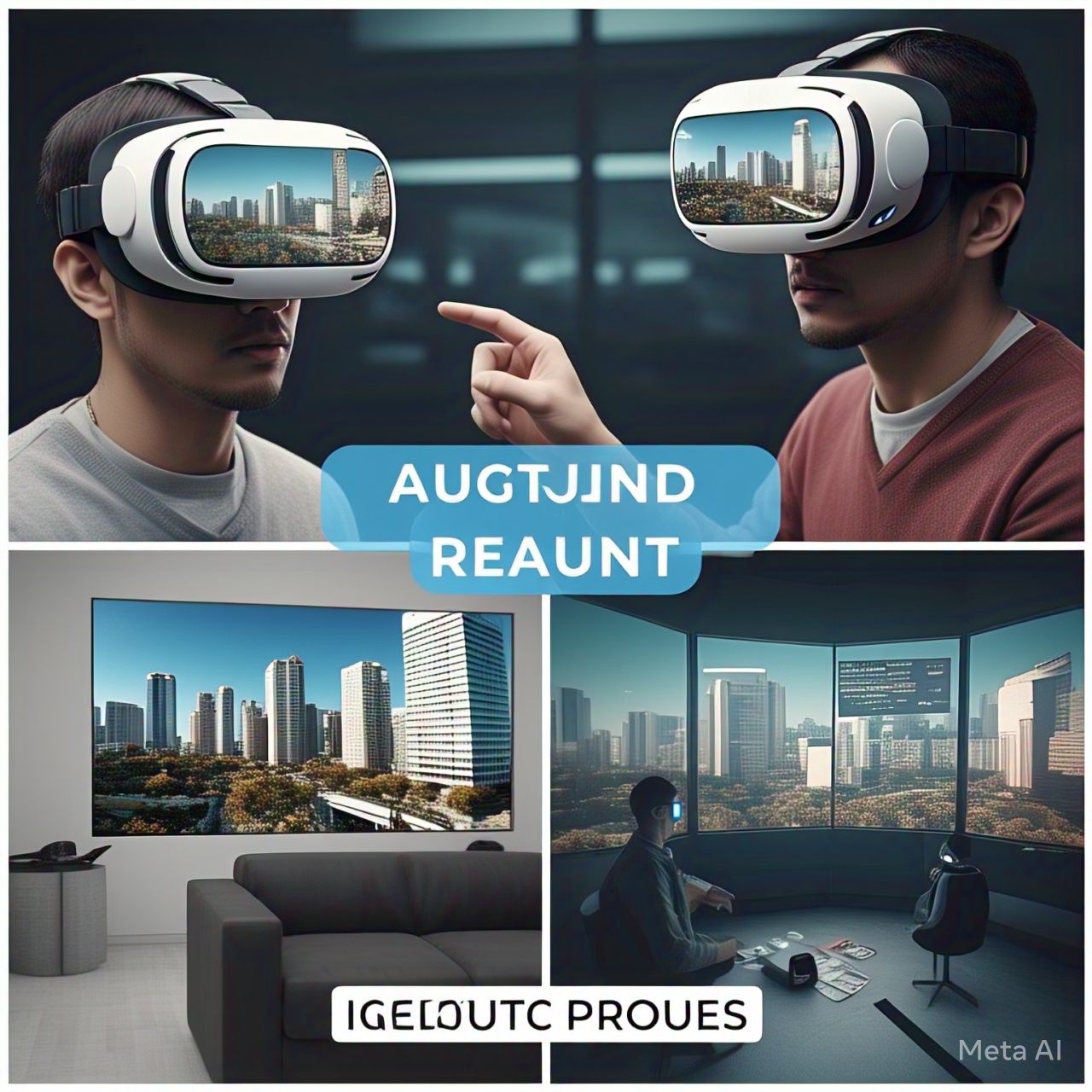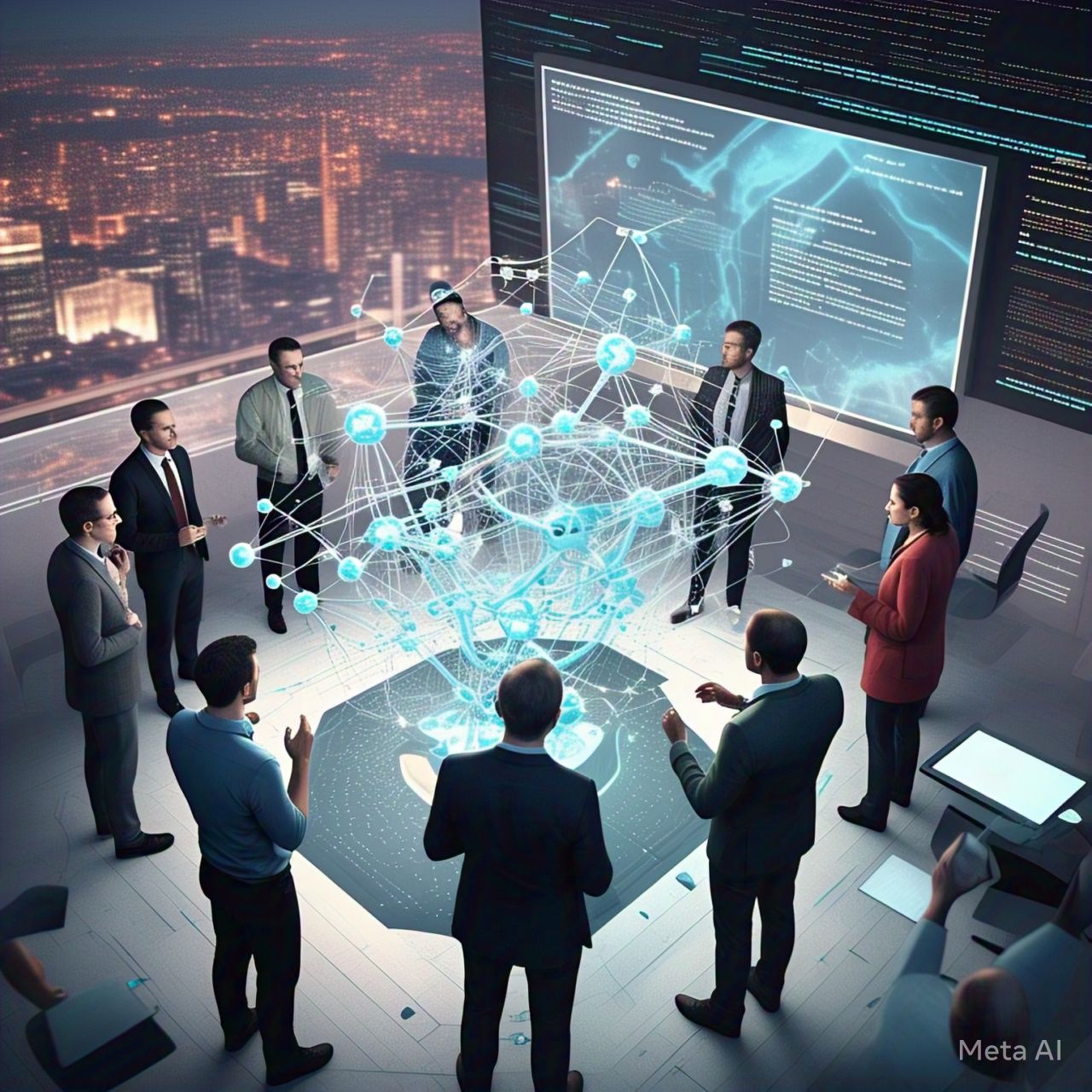Table of Contents
- Introduction
- Understanding Augmented Reality (AR)
- Understanding Virtual Reality (VR)
- Key Differences Between AR and VR
- Use Cases of Augmented Reality
- Gaming and Entertainment
- Healthcare
- Retail and E-Commerce
- Education and Training
- Manufacturing and Industrial Applications
- Use Cases of Virtual Reality
- Gaming and Immersive Entertainment
- Healthcare and Therapy
- Virtual Tourism and Real Estate
- Training and Simulation
- Social Interaction and Collaboration
- Future of AR and VR
- Conclusion
- FAQs
1. Introduction
Augmented Reality (AR) and Virtual Reality (VR) are two of the most exciting technologies in today’s digital world. Both offer immersive experiences but in different ways. While AR enhances the real world with digital overlays, VR creates a fully immersive virtual environment. This article explores the key differences between AR and VR, their applications, and their potential for the future.
2. Understanding Augmented Reality (AR)
Augmented Reality (AR) superimposes digital content onto the real world. This allows users to experience a blended environment where digital and physical objects coexist.
How AR Works:
- Uses cameras and sensors to detect the real-world environment.
- Digital elements are displayed on smartphones, AR glasses, or headsets.
- AR applications use AI and real-time data processing to enhance real-world interactions.
Examples of AR Technology:
- Snapchat and Instagram filters
- Pokémon GO (AR gaming)
- AR navigation apps (Google Lens, Apple ARKit)
3. Understanding Virtual Reality (VR)
Virtual Reality (VR) creates a completely immersive digital environment, cutting users off from the real world.
How VR Works:
- Requires VR headsets such as Oculus Rift, HTC Vive, or PlayStation VR.
- Uses motion tracking and controllers for interaction.
- Provides 360-degree views and spatial audio for immersion.
Examples of VR Technology:
- VR gaming (Beat Saber, Half-Life: Alyx)
- Virtual real estate tours
- VR training simulations for military and medical professionals
4. Key Differences Between AR and VR
| Feature | Augmented Reality (AR) | Virtual Reality (VR) |
|---|---|---|
| Environment | Enhances the real world | Creates a fully virtual world |
| Hardware | Smartphones, AR glasses | VR headsets, controllers |
| Interaction | Users remain aware of their surroundings | Users are completely immersed |
| Application | Navigation, retail, education | Gaming, training, entertainment |
5. Use Cases of Augmented Reality
5.1 Gaming and Entertainment
AR gaming enhances real-world environments with interactive digital elements. Examples include:
- Pokémon GO (AR-based exploration game)
- AR-powered board games and interactive storytelling apps
5.2 Healthcare
AR is revolutionizing healthcare through:
- Surgical guidance (overlaying real-time patient data on AR headsets)
- Physical therapy exercises with interactive AR feedback
5.3 Retail and E-Commerce
Retailers use AR for enhanced customer experiences:
- Virtual try-ons (fitting clothes, makeup, and glasses via AR apps)
- AR-enhanced shopping (IKEA Place app lets users visualize furniture in their homes)
5.4 Education and Training
AR provides interactive learning experiences, making education more engaging:
- 3D anatomy models for medical students
- Historical AR experiences bringing past events to life
5.5 Manufacturing and Industrial Applications
- AR-assisted maintenance for engineers
- AR-powered assembly instructions improving factory efficiency
6. Use Cases of Virtual Reality
6.1 Gaming and Immersive Entertainment
VR gaming provides a fully immersive experience:
- Popular VR games: Half-Life: Alyx, Beat Saber, VRChat
- 360-degree movies and concerts for ultimate entertainment
6.2 Healthcare and Therapy
VR is used in mental health and medical treatments:
- Exposure therapy for PTSD patients
- VR pain management in hospitals
- Medical training simulations for surgeries
6.3 Virtual Tourism and Real Estate
VR allows users to explore locations without traveling:
- Virtual museum tours (Louvre, Smithsonian)
- VR real estate tours for house hunting
6.4 Training and Simulation
Industries use VR for high-risk training environments:
- Flight simulations for pilots
- Military training scenarios
- Corporate VR training programs
6.5 Social Interaction and Collaboration
VR is enhancing remote work and socialization:
- Metaverse platforms like Horizon Workrooms
- VR business meetings and collaboration tools
7. Future of AR and VR
- Advancements in hardware (lighter, wireless headsets)
- 5G and edge computing improving real-time AR/VR experiences
- Integration with AI for more personalized experiences
- More affordable AR/VR solutions for consumers and businesses
8. Conclusion
Both AR and VR are transforming industries and redefining digital interactions. AR enhances our real-world experience by overlaying digital elements, while VR transports users into fully immersive virtual environments. As technology evolves, both AR and VR will continue to shape the future of gaming, education, healthcare, and business.
9. FAQs
9.1 What is the main difference between AR and VR?
AR enhances the real world with digital elements, while VR creates a completely immersive virtual environment.
9.2 Which is better for gaming, AR or VR?
VR offers a more immersive gaming experience, while AR provides interactive real-world integration.
9.3 Do AR and VR require special equipment?
- AR can be used with smartphones, tablets, and AR glasses.
- VR requires specialized headsets and controllers.
9.4 Can AR and VR be used together?
Yes, Mixed Reality (MR) combines elements of AR and VR for a hybrid experience.
9.5 What is the future of AR and VR?
The future includes lighter AR/VR devices, AI integration, and metaverse applications in daily life.
AR and VR are revolutionizing technology, offering new possibilities in entertainment, healthcare, and beyond. As these technologies evolve, they will continue to bridge the digital and physical worlds, transforming our everyday experiences.





